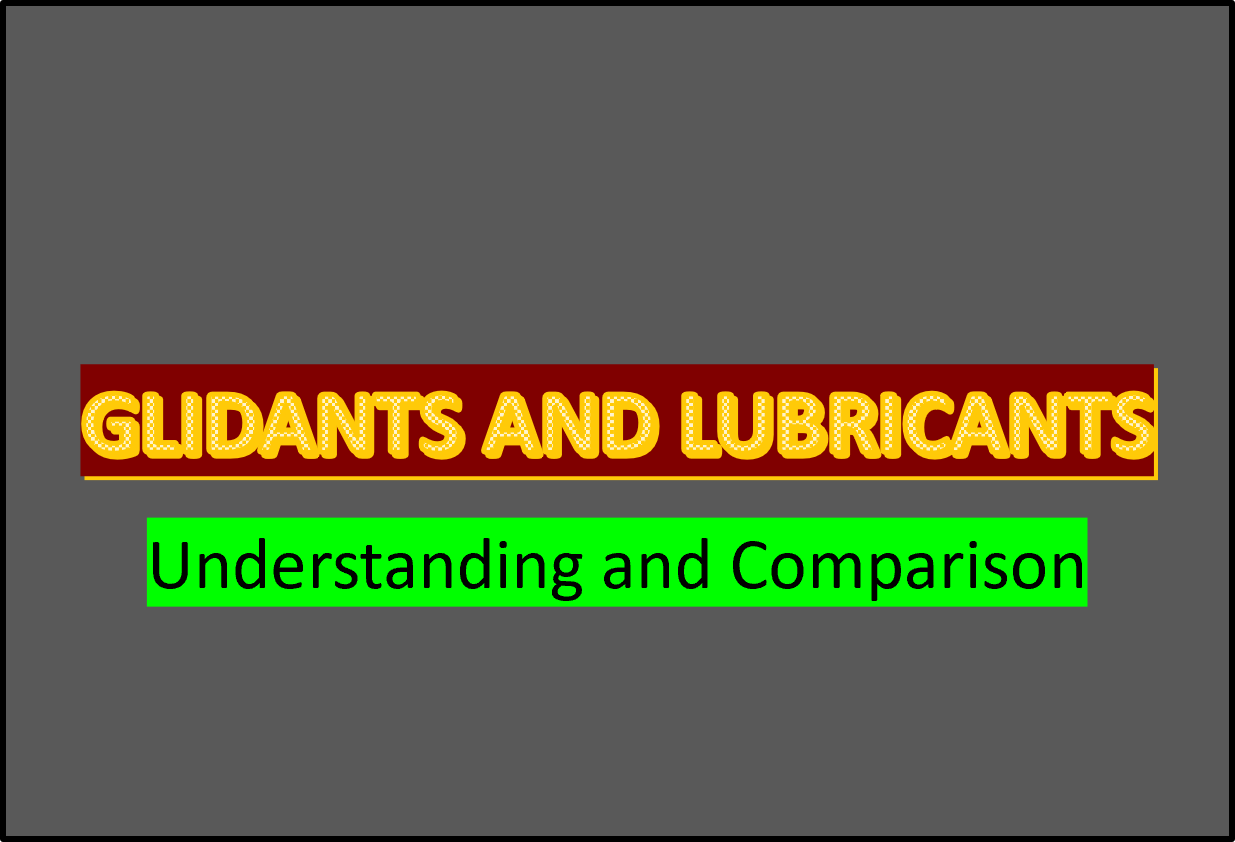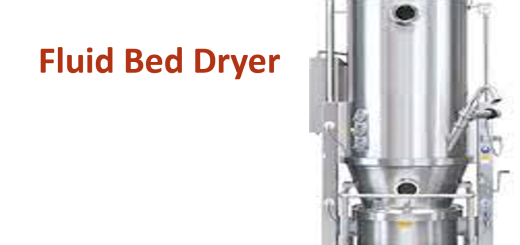Glidants and Lubricants -Understanding and Comparison

Describes detailing information on Glidants and Lubricants, Its Definition , Mechanism of action OA, Examples, Comparison, Affecting factors, Importance ,challenges and Frequently Asked Questions.
Glidant and Lubricants – Understanding and Comparison
Pharmaceutical manufacturing involves different processes that focuses on to produce drugs in various forms such as tablets, capsules, and powders. Among the crucial aspects of manufacturing, the use of excipients such as glidants and lubricants is essential in the view of achieving product quality. These excipients play a vital role in the overall manufacturing process, from facilitating the flow of powder and preventing tablet sticking.
Glidants used in Pharmaceutical Industry
Definition of Glidants
Glidants are excipients used in the pharmaceutical industry to improve the flow properties of powders by reducing interparticle friction. They are added to the powder formulation to enhance its flow characteristics, which facilitates uniform filling of powder into the die cavity during tablet compression.
Mechanism of Action
The mechanism of action of glidants involves reducing interparticle friction by coating the surface of the powder particles, which creates a lubricious layer. This layer reduces the van der Waals forces between the particles and enhances their mobility, resulting in improved flow properties.
Commonly Used Glidants
Commonly used glidants in the pharmaceutical industry include Talc, colloidal silicon dioxide. Talc is a naturally occurring mineral that is widely used as a glidant due to its excellent lubrication properties. Magnesium stearate is another commonly used glidant that also serves as a lubricant.
Lubricants used in Pharmaceutical Industry
Definition of Lubricants
Lubricants are excipients used in the pharmaceutical industry to prevent tablet sticking and improve the ejection of tablets from the die cavity during tablet compression. They also reduce wear and tear of the tablet compression machine by reducing friction.
Mechanism of Action
The mechanism of action of lubricants involves reducing the interfacial forces between the tablet and the die cavity wall, which facilitates its ejection. Lubricants also reduce the adhesion between the tablet and the punch faces, preventing sticking.
Commonly Used Lubricants
Commonly used lubricants in the pharmaceutical industry include magnesium stearate, stearic acid, sodium stearyl fumarate, and hydrogenated vegetable oil. Magnesium stearate is the most commonly used lubricant due to its excellent lubrication properties and low cost.
What is difference between Glidants and Lubricants ?
Glidants and lubricants have different functions in the pharmaceutical industry, although they share some similarities.
Glidants : Glidants are the excipients which are used to reduce interparticle friction and improve the flow properties of powders/Granules..
Lubricants : Lubricants are the excipients prevent tablet sticking and improve the ejection of tablets from the die cavity during tablet compression. Moreover lubricants reduce interfacial forces between the tablet and the die cavity wall.
Factors Affecting the Selection of Glidants and Lubricants
The selection of glidants and lubricants in pharmaceutical manufacturing depends on several factors. The nature of the active pharmaceutical ingredient (API), the physical properties of the powder, and the processing conditions are some of the factors that influence the choice of glidant or lubricant. The compatibility of the excipient with the API and other excipients in the formulation is also an important consideration.
Importance of Glidants and Lubricants in Pharmaceutical Manufacturing
The use of glidants and lubricants is crucial in pharmaceutical manufacturing. Glidants improve the flow properties of powders, which ensures uniform filling of the die cavity during tablet compression. Lubricants prevent tablet sticking and facilitate the ejection of tablets from the die cavity, which reduces the likelihood of tablet defects. The use of glidants and lubricants also reduces the wear and tear of the tablet compression machine by reducing friction.
Regulatory Considerations
The use of glidants and lubricants in pharmaceutical manufacturing is subject to regulatory scrutiny. The regulatory authorities require that the excipients used in drug products be safe and effective for their intended use. Manufacturers are required to conduct extensive testing to ensure that the glidants and lubricants used in their products are safe for human consumption and do not adversely affect the quality of the final product.
Challenges Associated with the Use of Glidants and Lubricants
The use of glidants and lubricants in pharmaceutical manufacturing is not without challenges. The selection of the wrong excipient can lead to issues such as capping, sticking, and picking, which can affect the quality of the final product. The overuse of glidants and lubricants can impact and Tablet hardness, which can result in tablets robustness or Quality parameters like dissolution or disintegration Tests
Quality Control of Glidants and Lubricants
Quality control is essential in ensuring the safety and efficacy of glidants and lubricants in pharmaceutical manufacturing. The quality control process involves testing the excipients for impurities, stability, and potency. Manufacturers are required to adhere to Good Manufacturing Practices (GMP) to ensure that the glidants and lubricants used in their products meet the required standards.
Frequently Asked Question (FAQs) :
What are the glidants and lubricants in the pharmaceutical industry?
Glidants and lubricants are excipients used in pharmaceutical manufacturing to improve the flow properties of powders and prevent tablet sticking during tablet compression respectively.
How do glidants and lubricants work?
Glidants improve the flow properties of powders by reducing interparticle friction, while lubricants prevent tablet sticking and facilitate the ejection of tablets from the die cavity during tablet compression.
What are some commonly used glidants and lubricants in pharmaceutical manufacturing?
Some commonly used glidants in pharmaceutical manufacturing include colloidal silicon dioxide and talc, while commonly used lubricants include magnesium stearate and stearic acid.
What factors influence the selection of glidants and lubricants in pharmaceutical manufacturing?
The selection of glidants and lubricants depends on several factors, including the nature of the API, the physical properties of the powder, and the processing conditions. The compatibility of the excipient with the API and other excipients in the formulation is also an important consideration.
How important is quality control in the use of glidants and lubricants in pharmaceutical manufacturing?
Quality control is essential in ensuring the safety and efficacy of glidants and lubricants in pharmaceutical manufacturing. The quality control process involves testing the excipients for impurities, stability, and potency to ensure that they meet the required standards.



